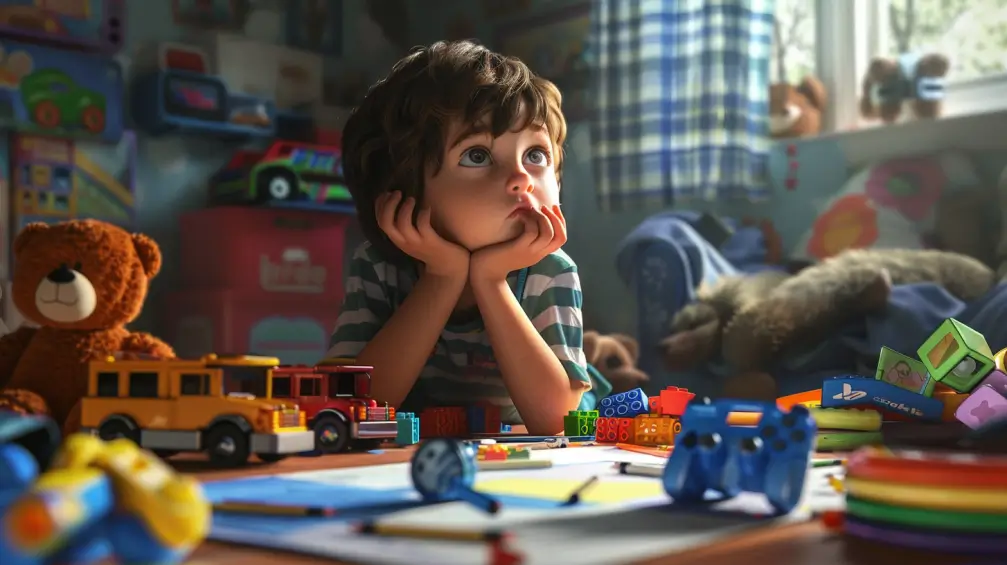In today’s consumer-driven society, it’s easy for parents to fall into the trap of too many toys syndrome. We want to shower our children with love and gifts, but research suggests that having an excessive number of toys can actually be detrimental to their growth and development.
I’ve experienced this firsthand with my two girls, who often get caught up in too many toys and end up playing with nothing.
Understanding ‘Too Many Toys Syndrome’
Understanding the negative impact of an excess of toys on a child’s development and well-being is essential in addressing ‘Too Many Toys Syndrome‘. When children are bombarded with too many toys, it can lead to overstimulation, hindering their ability to focus and be creative during playtime.
Quality over quantity is key in ensuring that each toy serves a purpose in fostering imagination and skill development. By choosing toys that encourage active play and creativity, you can help your child avoid the pitfalls of ‘Too Many Toys Syndrome’.
RELATED ARTICLE: Non Toy Gift Ideas for 1 Year Olds
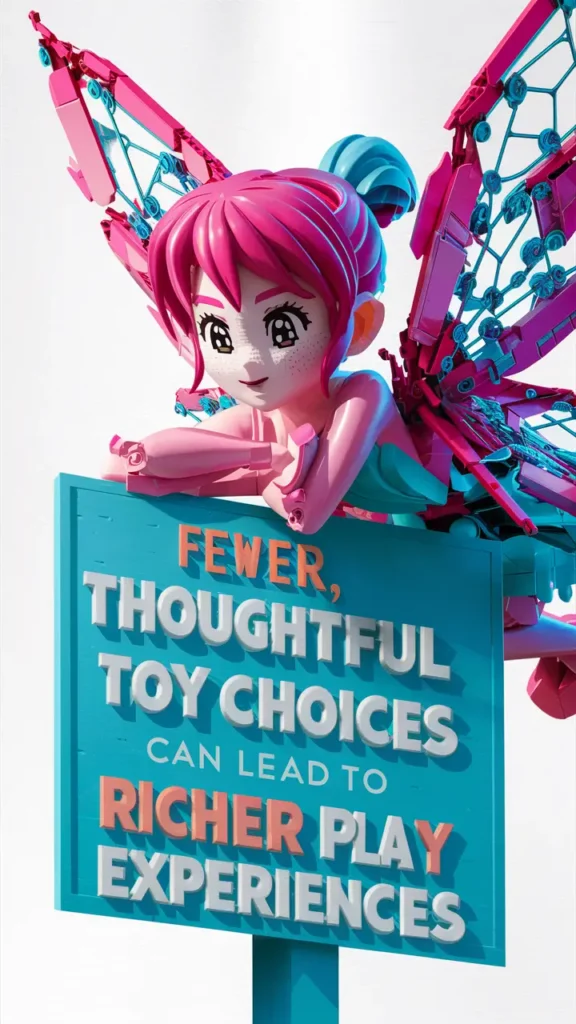
The Negative Effects of Too Many Toys
#1 Overstimulation and distraction
A room full of toys can be overwhelming for children, making it difficult for them to focus and engage in deep, meaningful play. The constant distraction of too many options can lead to shorter attention spans and less creative exploration.
I’ve noticed that when my girls have too many choices, they flit from one toy to another without really engaging with any of them.
#2 Decreased quality of play
Studies have shown that when children have fewer toys, they engage in higher-quality, more sustained play. With a limited selection, kids are more likely to use their imagination, explore different ways of using each toy, and develop important skills like problem-solving and resourcefulness.
While there may not be many studies on “too many toys syndrome,” research in child development and psychology has explored the impact of the quantity and types of toys on children’s play experiences, cognitive development, and behavior. Studies like those by Zachary S. Gold and others have examined how different play environments and the availability of toys can influence children’s play behaviors, social interactions, and cognitive skills.
This suggests that when provided with fewer toys in the environment, toddlers engage in longer periods of play with a single toy, allowing better focus to explore and play more creatively
National Library of Medicine
#3 Lack of appreciation
An overabundance of toys can prevent children from learning to truly value and appreciate their possessions. Always having something new can lead to a “disposable” mentality and a lack of gratitude.
My girls often beg for a new toy, only to lose interest in it shortly after receiving it. That always bothers me so much.
#4 Impaired social skills
Having too many toys can interfere with the development of crucial social skills like sharing, cooperation, and conflict resolution.
Children may become possessive over their many belongings and less likely to engage in collaborative play.
#5 Stress and mess
A constant influx of toys can create a chaotic, cluttered environment that is stressful for both children and parents. The never-ending cycle of cleaning up and organizing can be overwhelming and take away from quality family time.
I’ve found that decluttering my girls’ play space by donating toys they no longer use helps reduce stress for all of us.
With all this counted, I must add that excessive toys may diminish a child’s appreciation for individual items, impacting their social development and prioritizing material possessions over meaningful experiences.
We really don’t want that, right?!
The Psychology Behind Overbuying Toys
Parents often find themselves buying too many toys due to various emotional and societal pressures.
The guilt of not being able to spend enough time with your kids may lead you to overcompensate by showering them with toys.
Advertising plays a sneaky role, making you believe that more toys equal happier children.
Societal pressure adds to the mix, whispering that good parents provide abundantly. Emotional factors, like wanting validation or fulfilling your own unmet childhood desires through your children, also drive overbuying.
Understanding these motivations can help you make more mindful choices when selecting toys for your little ones.
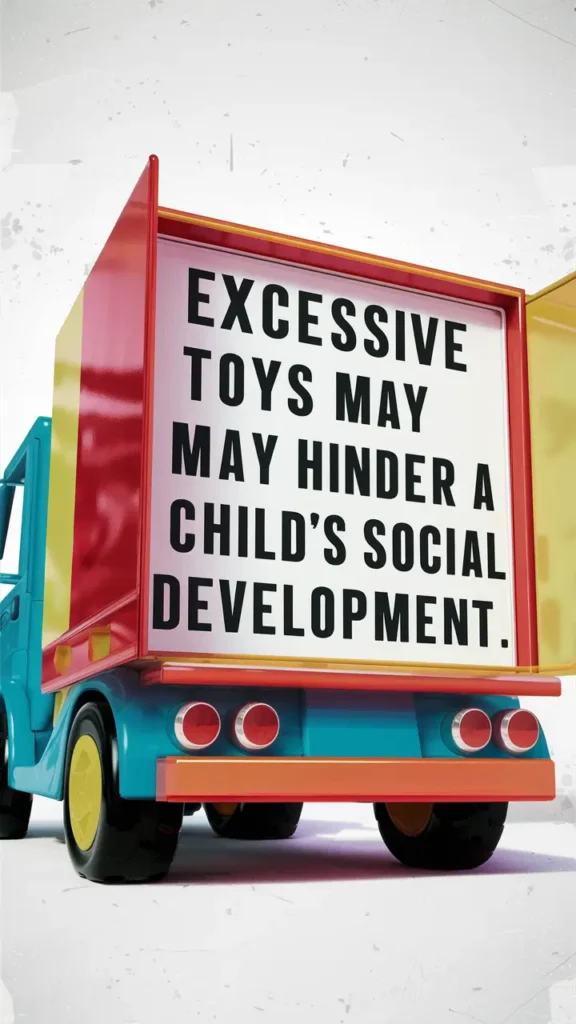
Strategies for Preventing Toy Overload
To effectively manage toy overload consider implementing practical strategies that prioritize quality over quantity.
Here are some tips to help you keep your toy collection in check and guarantee your child has a fulfilling play experience:
Embrace minimalism
Adopt a “less is more” approach to toys, focusing on quality over quantity. Regularly declutter and donate items that are no longer age-appropriate or played with.
Encourage non-toy play
Provide opportunities for children to engage in open-ended, imaginative play using everyday household items, outdoor exploration, and creative pursuits like art and music.
Implement toy rotation
Keep a limited number of toys accessible at any given time, and regularly rotate them out with others stored away. This keeps the selection fresh and engaging without overwhelming the play space.
Go for open-ended toys
Choose toys that encourage creativity and can be used in multiple ways, like blocks, play silks, and art supplies. Avoid toys that are overly prescriptive or have limited uses.
Set gift expectations
Communicate with family and friends about your preferences for gifts, suggesting alternatives like experiences, books, or contributions to a college fund.
Be mindful of your own toy-buying habits and resist the temptation to constantly bring new items into the home. I’ve started encouraging friends and family to give my girls art supplies or other non-toy gifts for their birthdays, which has been a great way to reduce toy clutter.
RELATED ARTICLE: Why we should buy non toxic toys for babies
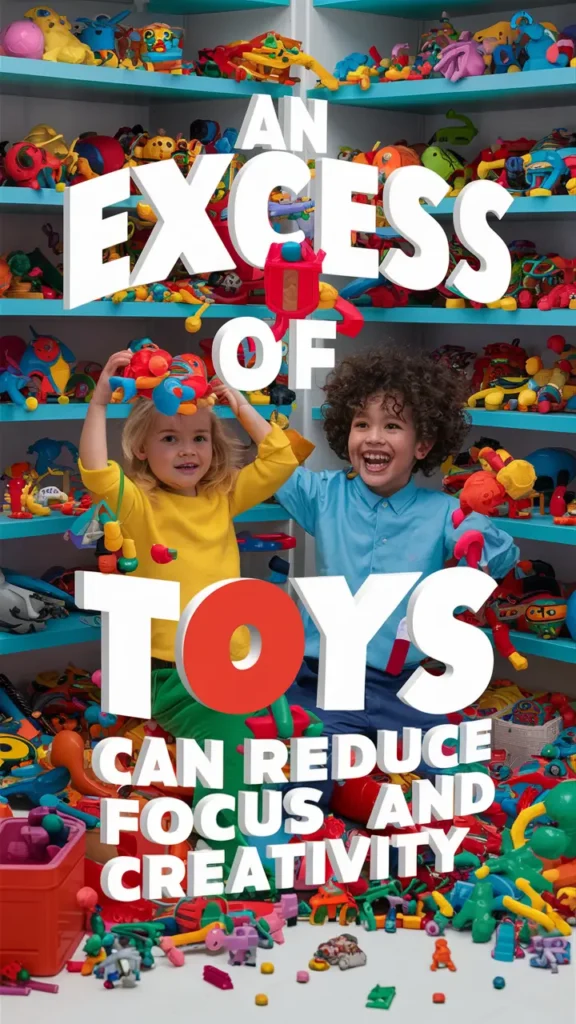
The Benefits of Fewer Toys
By being intentional about the number and types of toys in your child’s environment, you can foster:
- Increased creativity and imagination
- Longer attention spans and deeper engagement
- Enhanced problem-solving skills
- Greater appreciation and care for possessions
- Improved social skills and cooperative play
- Reduced stress and clutter in the home
It’s important to remember that child development is not dependent on a large quantity of toys. Children thrive when given the opportunity to explore, create, and learn through open-ended play in a supportive, nurturing environment.
Identifying and Categorizing ‘Good’ Toys
When selecting toys for children, prioritizing age-appropriate, stimulating, and safe options is essential according to child development experts. Good toys should maintain your child’s interest, be durable, and be versatile for different play scenarios.
By categorizing toys into groups like manipulative/functional, active, learning, creative, and make-believe, you can better identify the quality toys available. Seeking advice from specialists or child development websites can assist you in making informed choices.
Before you press the submit button or hand over your cash, pause and ask yourself why this toy? Can I see my child using this toy over and over again? Will it inspire hours of creative play? If you can answer yes to these questions, you’ve found a great toy.
Shannon Lindquist, Michigan State University Extension
Ideal Toys for Infants:
- Toys for infants should focus on sensory experiences.
- Soft toys, rattles, and items with different textures are beneficial.
- Consider toys that encourage reaching and grasping to aid in motor skill development.
Ideal Toys for Toddlers:
- Toddlers benefit from toys that promote physical activity and coordination.
- Building blocks, simple puzzles, and toys that encourage movement are recommended.
- Musical instruments and shape sorters can help with cognitive development.
Ideal Toys for Preschoolers:
- Preschoolers prefer toys that promote social interaction and imaginative play.
- Toys encouraging physical play are beneficial for muscle development.
- Realistic toys like farm animals, trains, and grocery store props are appealing.
- Additional toy ideas include puppets, puzzles, balls, dress-up clothes, and climbing structures.
Cost-Effective and DIY Toy Options:
- Toys need not be expensive; simple items in a basket can provide engaging play.
- DIY activities like cutting newspaper letters or stacking paper towel rolls are entertaining.
- Make puppets using kitchen utensils and paper bags for creative play.
- Inexpensive, open-ended materials often hold children’s attention longer than store-bought toys.
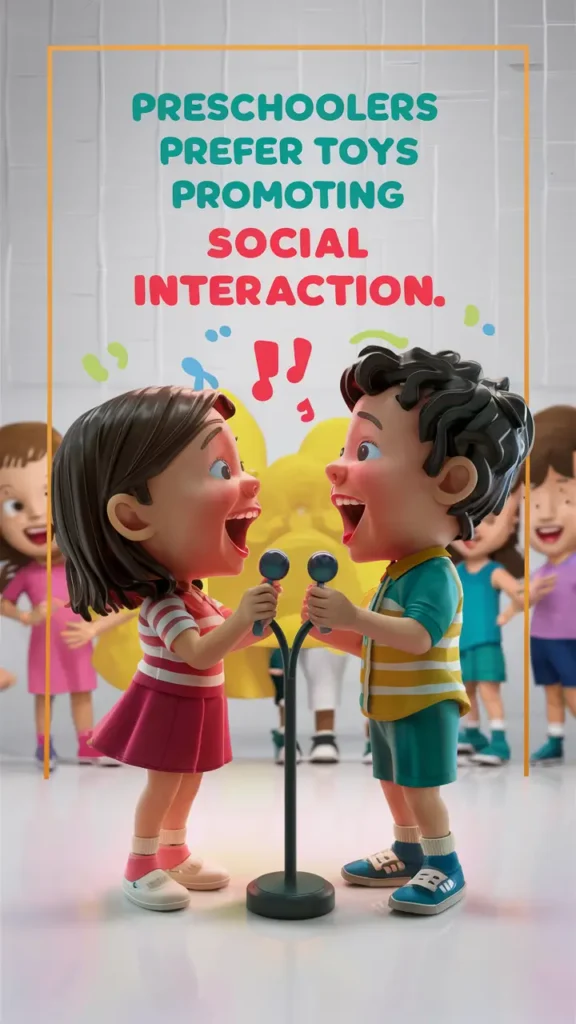
Conclusion
Now that you’ve learned how to tackle Too Many Toys Syndrome, it’s time to take action and create a play space that sparks joy and creativity.
As I continue to navigate the challenges of parenting, I’m learning that less truly can be more when it comes to providing my girls with a rich, fulfilling play experience.
By decluttering, prioritizing quality toys, and encouraging active play, you can transform chaos into calm and make playtime truly magical.
So grab those toys, sort them out, and watch as your children’s imaginations soar in a world free of toy overwhelm. Let the fun begin!
Frequently Asked Questions
What Happens When Kids Have Too Many Toys?
When kids have too many toys, clutter suffocates creativity, overwhelming both you and your child. Prioritize quality over quantity, foster active play, and organize intentionally to create a more engaging and manageable play environment.
What Is the 20 Toy Rule?
The 20 Toy Rule recommends limiting your child’s toy collection to roughly 20 items. This minimalist approach encourages creativity, imagination, and independent play by focusing on versatile, open-ended toys. Prioritize quality over quantity for engaging play experiences.
How Many Toys Is Too Many Toys?
Having too many toys can overwhelm both kids and parents, leading to clutter and disorganization. Simplify by focusing on creativity, choosing interactive toys, and decluttering regularly. Quality over quantity promotes engagement and manageable playtime.
